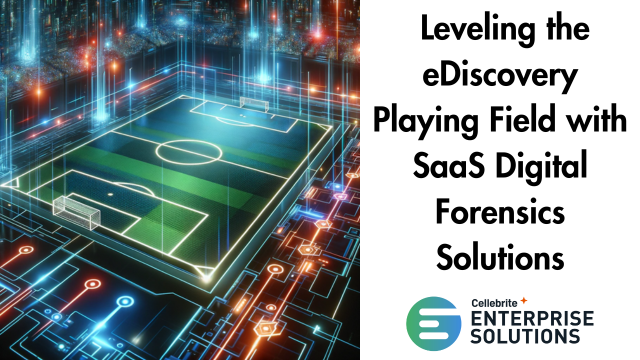
[EDRM Editor’s Note: EDRM is happy to amplify our Trusted Partners news and events. The opinions and positions are those of Monica Harris.]
The legal sector, with its emphasis on precision, speed and compliance, is not immune to the ongoing digital evolution reshaping industries. The evolving nature of records management by court systems further necessitates modernizing legal operations.
Surging eDiscovery Costs: A Modern Dilemma
eDiscovery, an integral component of legal informatics, is at the heart of the modernizing and transformative journey of the legal sector. In 2008, a typical mid-size lawsuit incurred eDiscovery costs of around $3.5 million, while in 2022, the annual budget for eDiscovery expenses in the US has soared beyond $40 billion. This astronomical surge in eDiscovery costs is fueled by the overwhelming growth of digital data, the complexity of technology and the inherently unpredictable nature of litigation events and deadlines.
The complex implementation and management of on-prem solutions demands a specialized in-house IT team, adding intricacies to an already complex process. While on-prem solutions offer internal control as an advantage, they entrust the critical aspect of data security to the internal IT team.
Monica Harris, Cellebrite Enterprise Solutions.
A common challenge for legal professionals today is to grapple with terabytes of evidence, containing millions of data points across thousands of file types, with only a few months before initial depositions. In the customary playbook of eDiscovery, on-premise (on-prem) digital forensics solutions have been the cornerstone for data collection and preservation. However, the reliance of on-prem solutions comes with its formidable hurdles.
The complex implementation and management of on-prem solutions demands a specialized in-house IT team, adding intricacies to an already complex process. While on-prem solutions offer internal control as an advantage, they entrust the critical aspect of data security to the internal IT team.
However, most firms lack economies of scale to invest sufficiently in cyber defenses and constant solutions upgrades. What might seamlessly integrate for a large corporation might translate to impractical and disproportionate burdens for smaller entities, creating a divide in the efficacy of eDiscovery across different organizational scales.
SaaS: A Compelling Alternative
As the demands of modern legal operations evolve, Software-as-a-Service (SaaS) digital forensics solutions emerged as a compelling alternative. Embracing cloud technology and architecture, the transformative paradigm ushers in a fresh era of efficiency, agility and effectiveness, reshaping the legal tech and eDiscovery terrain.
- Enhanced Capabilities Without Infrastructure Maintenance
Cloud architecture, the integral allure of SaaS solutions, liberates enterprises from the burdens of constant infrastructure management, promising access to the latest and most comprehensive tools and capabilities for eDiscovery without the disruption of continuous updates.
By entrusting these technical intricacies of hardware maintenance and software updates to adept service providers, the legal team can refocus their core responsibilities to navigate the ever-evolving nuances of eDiscovery. - Accessibility in the Cloud
Hosted on the vendor’s servers, cloud-based SaaS allows users to access the necessary tools and resources from any location. This enhanced accessibility transcends geographical boundaries, accelerates workflow and enables seamless real-time collaboration among stakeholders.
The agility afforded by instantaneous access and communication facilitates a swift and adaptive response to evolving case dynamics. Armed with this dynamic capability, legal professionals can respond promptly to unexpected developments, ensuring a streamlined and effective approach to eDiscovery.
Hosted on the vendor’s servers, cloud-based SaaS allows users to access the necessary tools and resources from any location. This enhanced accessibility transcends geographical boundaries, accelerates workflow and enables seamless real-time collaboration among stakeholders.
Monica Harris, Cellebrite Enterprise Solutions.
A Glimpse into the Future: SaaS Adoption and Beyond
In an era where data growth and technology complexity drive eDiscovery costs to unprecedented heights, the solution forward would be focusing on controllable expenses, such as eDiscovery system architecture, while planning for uncontrollable areas.
The migration toward SaaS architecture isn’t merely a fleeting trend—it’s a strategic leap into a future characterized by enhanced efficiency, adaptability and compliance. SaaS embodies the essence of modern legal tech, offering a streamlined approach that promises more efficient, agile and legally compliant data collection. By transitioning to a more flexible and scalable SaaS, smaller entities can level the playing field, and efficiently manage eDiscovery processes, thereby fostering a more equitable legal landscape.
Assisted by GAI and LLM Technologies for images per EDRM GAI and LLM Policy.


